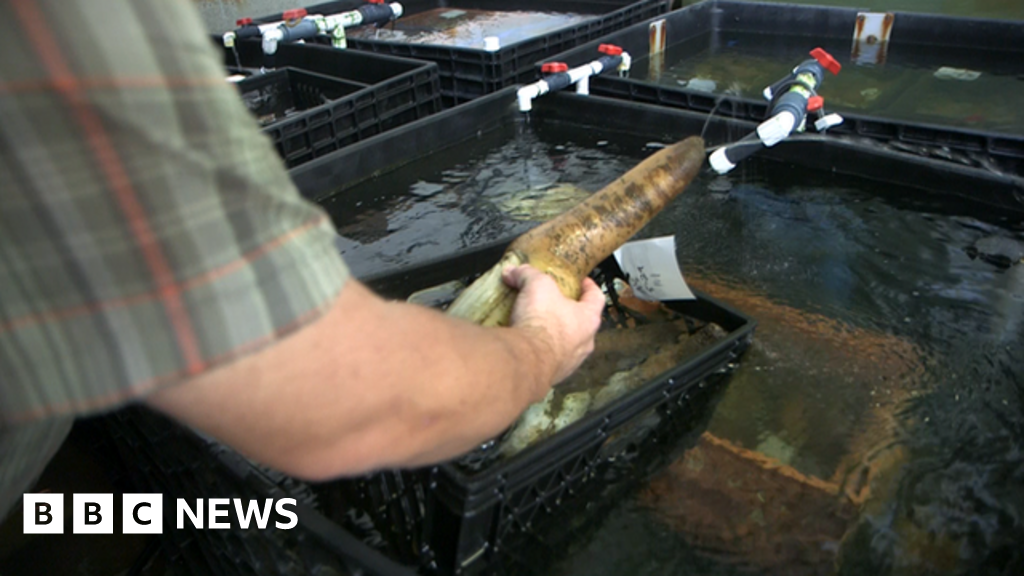

Geoducks can fetch $10.50 a pound wholesale, with a typical farmed clam weighing up to two pounds. Washington is the only state on the West Coast that sold off tideland, so beaches that for years were treated as public are now filled with geoduck pipes.įive to seven years after planting, workers use high-pressure water hoses to "liquefy" the beach into the consistency of quicksand, then reach down into the shoulder-deep slurry and pull out their prize. Sections of PVC pipe are sunk into tide flats and capped with mesh nets, protecting the clams for a couple of years until they can dig deep into the sand. Then researchers and farmers hit upon a formula that worked. But when planted in the tide flats, they became meals for crabs and seagulls. Some pioneers resorted to children's wading pools filled with sand to grow the clams big enough to survive in the wild. When farmers tried to grow geoducks, the free-swimming larvae and the tiny "seed" clams frequently died in the tanks. To gather the giant clams - often eaten raw as a delicacy at Asian restaurants in the United States and Asia - divers had to plunge into deep, frigid Puget Sound water and blast the seafloor with water hoses to loosen the clams. Only a decade ago, geoduck agriculture was a primitive and speculative enterprise. Responds Taylor: "For people to come out and say we're destroying the sound, that's offensive to me." "It seemed like it wouldn't be good for our land values to have a totally ruined beach." "We looked at the beaches that this had been done to and we thought, 'No way,' " said Laurie Brauneis, a waterfront resident who helped start a group, Save Our Shoreline, to fight geoduck farming. The disagreement is setting up a collision of cultures as the rapid suburbanization of Puget Sound shores meets a century-old industry that has tapped into new technology and a global economy. That has alarmed some other beachfront landowners and environmentalists, who fear an unchecked growth in geoduck farms, even though the environmental impacts are yet unknown. Recent advances in cultivating the valuable bivalve, along with burgeoning Asian markets, have made miles of mud flats produce a crop worth as much as $900,000 an acre. Inside each pipe lives a tiny specimen of the ridiculous-looking geoduck (pronounced gooey-duck), a giant clam with a siphon that can grow as long as a man's forearm. For five generations, Paul Taylor's family has grown clams and oysters on South Puget Sound, building the largest shellfish company on the West Coast along with friendships in the environmental community.īut these days when Taylor walks the tideland on Stretch Island, he steps past fields of white cylinders, like neatly planted flower vases, that have put Taylor Shellfish directly at odds with some historic allies.
#GEO DUCK SIPHON FREE#
Once you can touch the shell, excavate around the clam to free it from its vacuum-sealed lair.STRETCH ISLAND, Wash. Once one is spotted, I like to dig nearby, shoveling down and then across to the clam’s burrow-like a bank robber tunneling into a vault. They betray their whereabouts with a yard-long, double-barreled siphon that sometimes protrudes from the hole. Geoduck larvae will bury themselves 3 feet beneath the substrate soon after hatching and then remain entombed for the rest of their lives, which can be 100 years or longer. Its strange name derives from the Nisqually word gweduk, meaning “dig deep.” Pioneers sometimes called them “horsenecks,” or worse. It’s hard to say which is more difficult-locating the clam’s home or digging it out. If you haven’t tried unearthing a geoduck before, this will be your last best chance of the year. The first week in July will see a few in the negative 3-foot range. Although a few of the big clams live as far south as Baja California, Puget Sound is a stronghold of abundance, and it is here where the art of geoduck clamming has been perfected. Like climbing Mount Rainier, fishing for steelhead or performing a microbrew pub crawl across Seattle, digging for the wily geoduck is an exercise in regional identity.


 0 kommentar(er)
0 kommentar(er)
